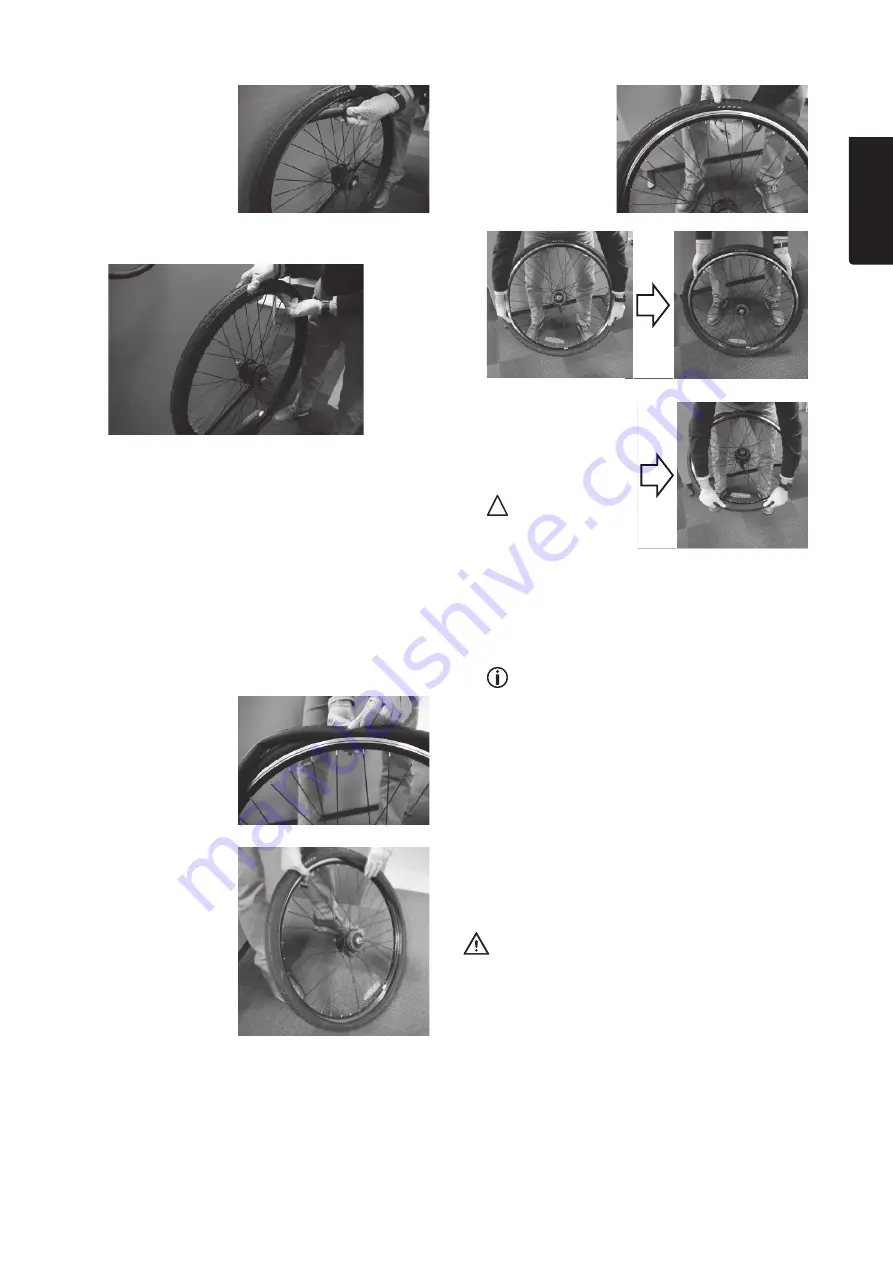
17
E
ngl
is
h
6. Run your hands in
opposite directions
around the circumference
of the tyre, pushing
the edge of the tyre over
the wheel rim as you go.
Important:
Take care not to pinch
the tube between
the edge of the tyre and
the rim.
4. Push the tube
inside the tyre
around the entire
circumference.
5. Hold the valve in
place and push
the side of the tyre
around the valve
over the wheel rim.
7. If you are removing the tyre and tube because of
a puncture, you should:
-
inspect both the tyre and the rim for damage.
Check for damage both visually and by running
your hand along the inside of the tyre and
wheel rim. Check the rim tape.
-
remove any glass, sharp objects, etc. and replace
the tyre when necessary.
Refitting the tyre and inner tube
1. Loop one side of the tyre back onto the wheel rim.
2. Partially inflate the inner tube just so that the tube
resumes its shape.
3. At the valve hole
in the wheel rim,
pull up the side of
the tyre and insert
the tube valve into
the hole.
5. Remove the tube
valve from the hole
in the rim and
remove the inner
tube from the tyre.
6. Remove the tyre from the wheel rim.
7. Inflate the tyre, and then let the air out again.
8. Squeeze both sides of the tyre together where it
meets the wheel rim, and continue around the entire
circumference of the wheel.
Note:
Steps 7 and 8 are important in order to
prevent the tube from being pinched between the rim
and the edge of the tyre.
9. Inflate the tyre to the recommended pressure, which is
stated on the side of the tyre. For the bicycle’s original
tyres, the pressure is 3.5–6.0 bar (50–85 PSI).
Foot/coaster brake
For the foot brake to function properly, it is important
that the chain has the correct tension. Therefore,
regularly check the tension of the chain (see
Drivetrain
in
the
Settings and adjustments
section).
Hand/rim brake
Warning:
The functioning of the rim brakes is critical for safety
– pay extra attention to reading and understanding
the instructions.
Содержание 31-9779
Страница 2: ......






























